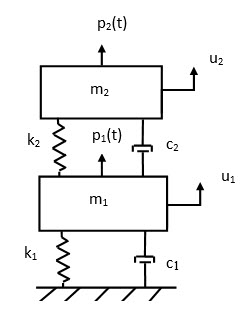

Honeycomb sandwich structures are designed to have a high stiffness-to-mass ratio. The stiff, strong face sheets carry the bending loads, while the core resists shear loads.
The face sheets are typically made from aluminum or carbon fiber with epoxy resin.
The honeycomb core material is usually aluminum for aerospace applications. Other core materials include Nomex aramid or Kevlar para-aramid fiber sheets saturated with a phenolic resin. In addition, closed cell foams such as Rohacell are substituted for honeycomb in some sandwich panel designs.
* * * *
According to Klos, Robinson and Buehrle…
Panels constructed from face sheets laminated to a honeycomb core are being incorporated into the design of modern aircraft fuselage and trim treatments. The mechanical properties of these panels offer a distinct advantage in weight over other commonly used construction materials.
The strength to weight ratio of honeycomb composite panels is high in comparison to rib stiffened aluminum panels used in previous generations of aircraft. However, the high stiffness and low weight can result in supersonic wave propagation at relatively low frequencies, which adversely affects the acoustical performance at these frequencies.
Poor acoustical performance of these types of structures can increase the cabin noise levels to which the passengers and crew are exposed.
* * * *
Honeycomb sandwich structures are used in a wide variety of critical structures in Air
Force space systems. These include payload fairings (shrouds) for launch vehicles, adapters for mounting of satellite payloads, solar array substrates, antennas, and equipment platforms.
Since 1964, there have been several known or suspected failures of honeycomb structures. These failures have been attributed to the lack of venting in the panel design manufacture. On the other hand, based on available information, vented honeycomb sandwich panels never have experienced failure during flight. In the cases documented herein, the consequences of the failures have been significant and costly.
Honeycomb sandwich panels that are not vented will contain air (and possibly volatiles,
including moisture) which causes a pressure differential during launch into orbit. If heating also is involved, the internal pressure will rise further. In any case, each individual unvented honeycomb cell acts as a tiny pressure vessel imposing stresses on the skin-to-core bonds. If these stresses are high enough, panel failure (i.e., skin-to-core debonding) will occur. Certain defects introduced during panel manufacture would make failure more likely.
Excerpt from: SMC-TR-94-02
* * * *
Constrained layer damping material consists of a viscoelastic material on the bottom and a stiff constraining layer on top
It uses shear deformation in the viscoelastic layer for energy dissipation
The use of “add-on” constrained layer damping may be difficult to achieve for composite and sandwich-composite structures due to the high stiffness of the base structure. Better damping is achieved by embedding the viscoelastic material either in the skin or in the core.
Reference: Hambric, Sung, Nefske, Engineering Vibroacoustic Analysis, Wiley, West Sussex, United Kingdom, 2016
* * * *
Here are some references:
Natural Frequencies of a Honeycomb Sandwich Plate: honeyG.pdf
Honeycomb Sandwich Panel Damping: honeycomb_sandwich_damping.pdf
Honeycomb Sandwich Ring Mode Frequency: honeycomb_sandwich_ring_frequency.pdf
Hexcel Honeycomb Sandwich technical information: honeycomb_design.pdf
Sound Transmission through a Curved Honeycomb Composite Panel: ST_curved_honeycomb_panel.pdf
More later…
– Tom Irvine








